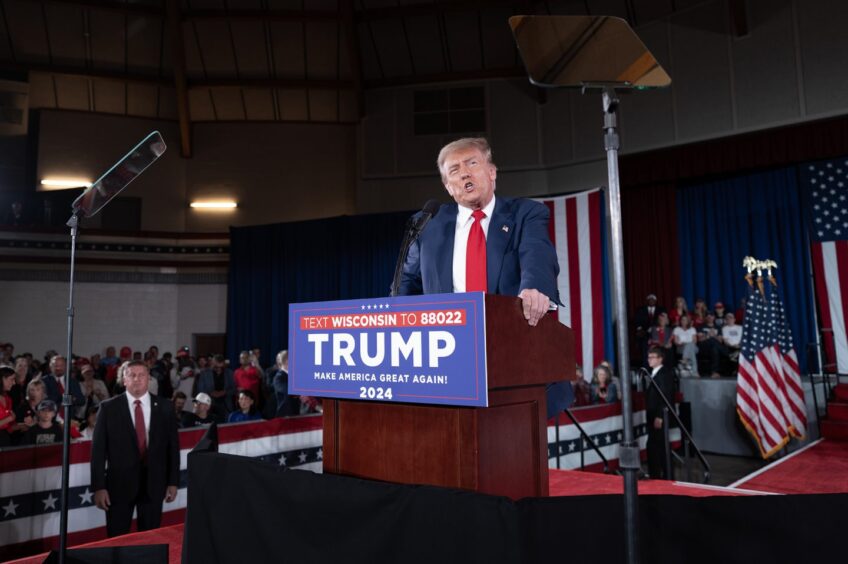
Donald Trump has declared victory in the US elections after the Republican won key states including North Carolina, Georgia and Pennsylvania.
With Trump winning the majority of electoral college votes, the UK is now adding up what it means when the 78 year-old returns to office.
Panmure Liberum analyst Ashley Kelty predicted oil prices would be set to drop as Trump has “little interest in renewables and will actively encourage US oil production growth”.
He added that Trump’s appetite for protectionist trade policies could have wider global impacts.
Trump has said he would dramatically increase trade tariffs, especially on China, if he became the next US president.
In a note Kelty said: “A Trump presidency could also see policies (ie tariffs) that may further pressure the Chinese economy, hence weakening demand further.”
As Trump delivered an confirmation speech from Florida, Reuters reported a 2% fall in after two sessions of gains, as the dollar surged.
Brent crude oil futures was down $1.17, or 1.5%, to trade at $74.36 per barrel at 0710 GMT, while US West Texas Intermediate (WTI) crude lost $1.11, or 1.5%, to trade at $70.88 per barrel.
The installation of Trump as the 47th President of the United States raises serious questions over the future of the Biden administration’s Inflation Reduction Act (IRA) and its $400 billion (£310bn) in new spending and tax breaks that aim to boost clean energy, alongside the 2021 Bipartisan Infrastructure Deal, which committed over $65bn for transmission and grid.
However it might not be all doom and gloom for those keen on the renewable energy industry and the global attempt to quell fossil-fuel driven climate change.
Analysts Xodus have pointed out that US federal energy policy is “only part of the equation”.
In a recent report, the analyst said half of the growth in US renewable energy generation since the turn of the century can be linked to state-level renewable energy requirements.
Individual US states have policies in place such as the renewable portfolio standard
(RPS) or clean energy standard (CES) that mandates increased production from low-carbon sources.
And while the definitions of “renewable” and “clean energy” differ from state to state, more than half of US states have these in place – including 15 states setting a target for 100% clean or renewable portfolio requirements, with deadlines ranging between 2030 and 2050.
Recent analysis from Rystad found that Republican-leaning states are unlikely to scrap their clean energy projects and jobs, no matter who is elected.
Some analysts even went so far as to point to some larger trends behind the rhetoric.
Speaking at the FT Energy Transition Summit in October, Carlyle chief strategy officer Jeff Currie said: “I’m just going to point out that under the Trump administration, the world got a lot greener and under the Biden administration it got a lot browner.
“That’s just an observation. Let’s leave it with that. But I think you know it tells you that there are other dynamics at play there outside of the control of any administration.”
But the UK’s Labour government is not thought to be first on the list of President Trump’s phone calls, particularly after foreign secretary David Lammy called Trump “a woman-hating, neo-Nazi-sympathising sociopath” who is “a profound threat to the international order”.
Trump trade policies could also undermine the UK’s ability to borrow as it seeks to invest and attract billions in becoming a “clean energy super power”.
The National Institute of Economic and Social Research (NIESR) principal economist Ahmet Kaya has predicted the Bank of England would probably have to raise interest rates to counter a rise in prices caused by higher US tariffs but inflation would still probably rise by between 2 and 3 percentage points over two years.
That kind of increase in borrowing costs would deal a major blow to the plans of the new UK government to use more borrowing in addition to tax rises to fund increased spending.
Recommended for you

 © Shutterstock Feed
© Shutterstock Feed